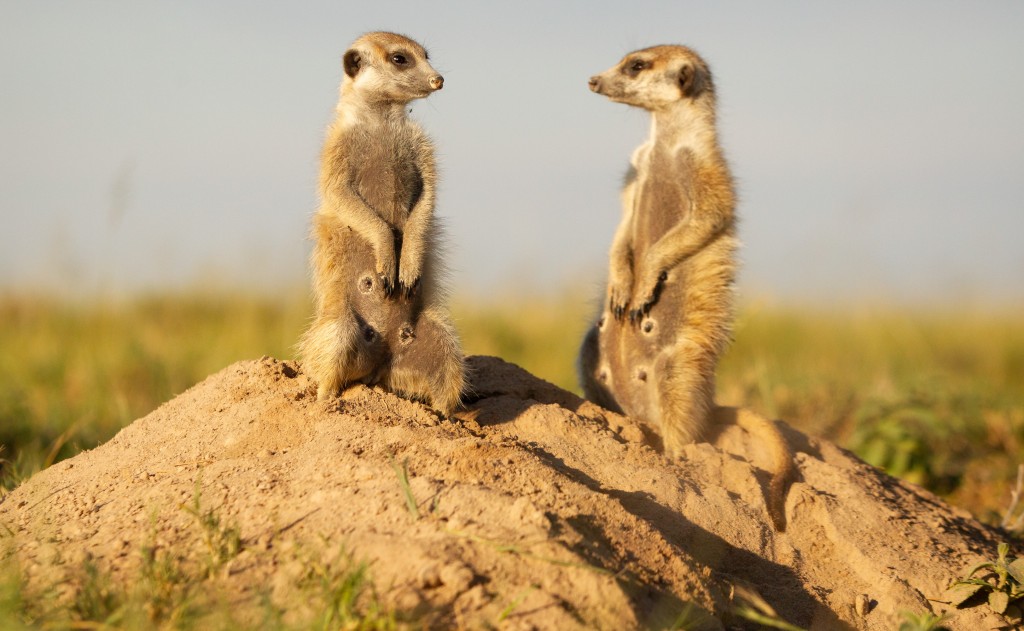


Makgadikgadi
A Travel Re- Inspired in Makgadikgadi Re-inspiring attractions of Makgadikgadi:
i. Chapman’s Baobab Chapman’s Baobab lies with its roots deeply planted a short distance south-east of the rural village of Gweta and is a well known landmark in Botswana. The massive tree is considered as one of the oldest Baobab's in Africa and a famous attraction in Makgadikgdai Pans.
ii. Nxai Pans National Park Situated just north of the Maun Nata main road, Nxai Pans National park is an ideal spot in Botswana to spend your day. The pans are the largest salt pans in the world - offering a unique safari experience, with great game viewing.
iii. Nata Bird Sanctuary The Nata Bird Sanctuary was developed at the mouth of the Nata River in the extreme northeast of Sua Pan. It is home to any species of African mammal wildlife and most importantly the African birds. From flamingoes, Pelicans, Ducks, Geese, Ostriches to Kingfisher Eagles, Spoon Bills, this bird sanctuary in Botswana has everything to offer to its visitors.
iv. Gabatsadi Island Gabatsadi Island lies west of the Gweta-Orapa track, 54 km south of Gweta. This enormous island doesn’t attract many visitors but have garnered attention from Prince Charles who went to capture the indescribably lovely scene in watercolor.
v. Baines' Baobabs Baines Baobabs are seven immense baobab trees on an island that overlooks the white, crusted Kudiakam Pan. These Baobabs were named after the 19th Century explorer, Thomas Baines whose accounts, drawings and maps of most of Africa were in appreciation of the beauty of the continent.
vi. Kubu Island Tour around Kubu Island can be fun as it allows you to explore more about the history of the island. This rocky island Sowa pan is full of prehistoric evidence of a lake as well as human inhabitation. You can see uniquely shaped baobabs on the crescent island that is surrounded by the white surface of the pan.
Activities :
Makgadikgadi National Park and the Boteti River
Although this area was also once part of the great super lake, it is quite different in character to the Makgadikgadi Salt Pans. To the west of Nwetwe Pan lies open grassland which is home to a wide range of animals as it incorporates both desert and riverine habitats. The grasslands give rise to a dense riverine forest on the banks of the Boteti River. During periods of above average rainfall, the Boteti River is one of the few drainage systems that carry the Okavango floodwaters out of the delta into the Kalahari Desert. The Boteti River lies right in the middle of these great vast thirst lands where water is priceless thus attracting some of Africa's last remaining great wildlife populations
Nxai Pan National Park
Although Nxai Pan was also once part of the great super lake, it is quite different in character to the Makgadikgadi Salt Pans. It consists of a series of grass covered fossil pans dotted with islands of umbrella acacia, supporting a good variety and density of game and birdlife.
Makgadikgadi Salt Pans
The network of salt pans found in Botswana's eastern regions are a striking physical feature and some of the largest of their kind in the world. The pans, huge, flat expanses of hot, sun-blasted terrain and fringed by vegetated islands and peninsulas, were once part of a great super lake that covered much of northern Botswana. This desolate landscape offers nothing but sand and sky yet its eerily silent fossil beaches and stunted red baobab trees leave an impression on every visitor.